St. Patrick’s Cathedral is one of New York City’s finest buildings and most spectacular churches, and is the largest house of worship for Catholics in the city.
Over 150 years ago, Archbishop John Hughes announced his plans to build the “new” St. Patrick’s Cathedral.
In a ceremony at Old St. Patrick’s Cathedral, Archbishop Hughes proposed “for the glory of Almighty God, for the honor of the Blessed and Immaculate Virgin, for the exaltation of Holy Mother Church, for the dignity of our ancient and glorious Catholic name, to erect a Cathedral in the City of New York that may be worthy of our increasing numbers, intelligence, and wealth as a religious community, and at all events, worthy as a public architectural monument, of the present and prospective crowns of this metropolis of the American continent.”
It took 21 years to build and was finally opened to the people in the spring of 1879.
According to Archbishop Timothy Dolan’s welcome messages, more than one million prayer candles are lit at St. Patrick’s Cathedral every year and five million people visit the Cathedral every year.
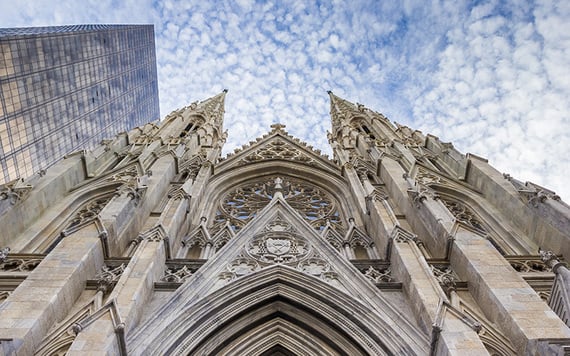
The stunning facade of St. Patrick's Cathedral in New York.
Here are some facts about St. Patrick's Cathedral:
St. Patrick’s Cathedral on Fifth Avenue in New York is the largest Gothic Roman Catholic Cathedral in the United States.
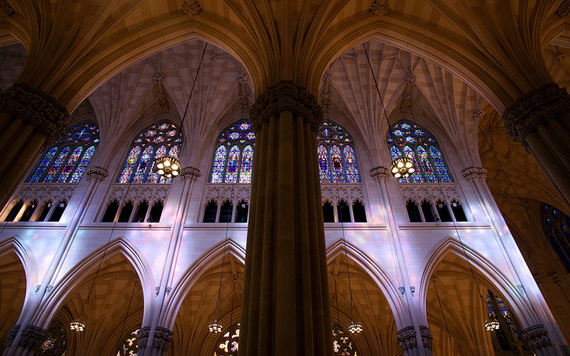
The Gothic columns in St. Patrick' Cathedral New York.
The cornerstone of the Cathedral was laid in 1858.
The Cathedral was named after St. Patrick, the patron saint of Ireland, in response to the increasing numbers of Irish immigrants in the city.
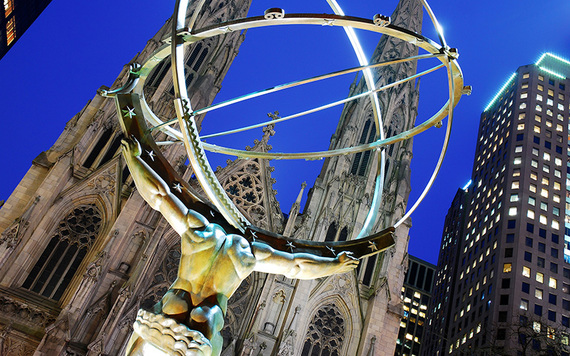
The Atlas statue on Fifth Avenue outside St. Patrick's Cathedral.
The church takes up one whole city block. The spires rise 330 feet above street level. It seats 2,400 people.
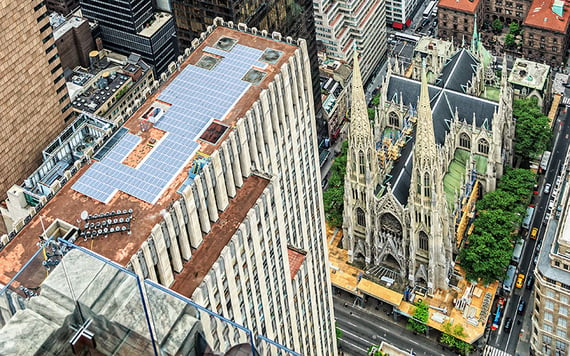
From the air! The church takes up one whole city block. The spires rise 330 feet above street level. It seats 2,400 people
The new gallery organ, which was replaced in 1930, has 7,855 pipes.
The Cathedral has 21 altars and 19 bells, each named after a different saint.
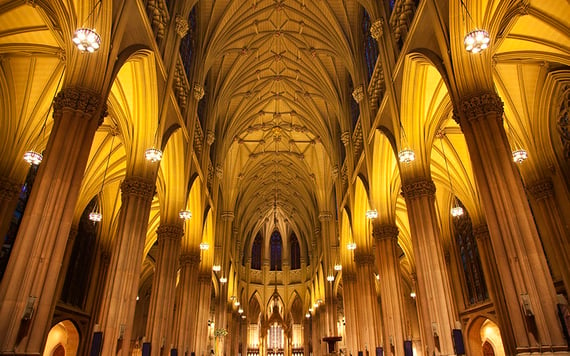
The Cathedral has 21 altars and 19 bells, each named after a different saint.
It has more than 2,800 stained glass panels.
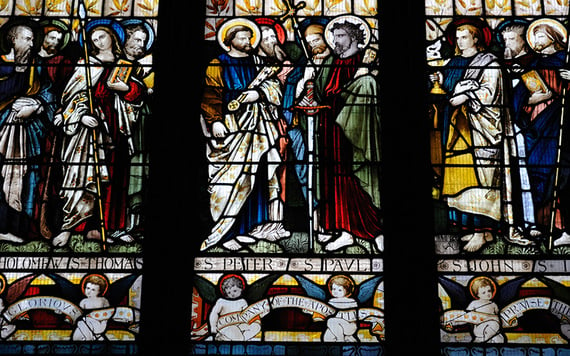
It has more than 2,800 stained glass panels.
Eight Archbishops of New York are buried in a crypt under the high altar.
In normal times, there are between 18 and 15 masses said every day, and 150 weddings every year.
* Originally published in 2013, updated in March 2025.
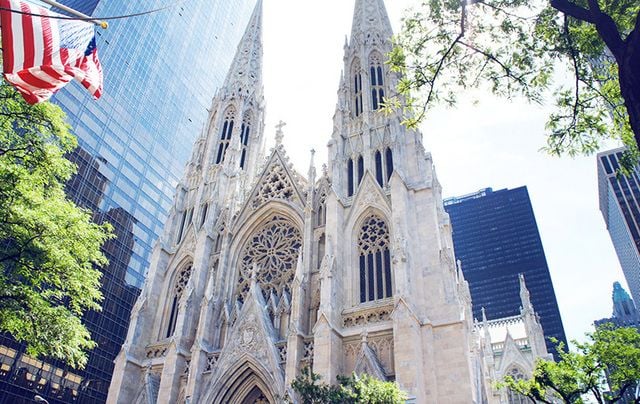



Comments